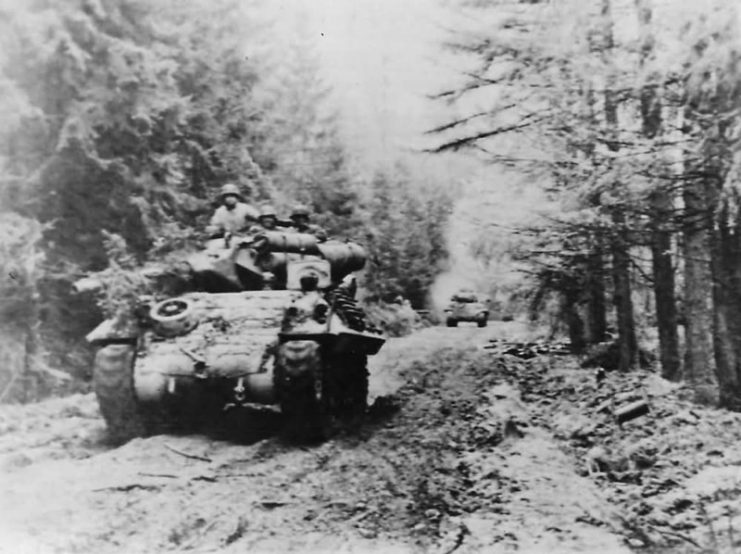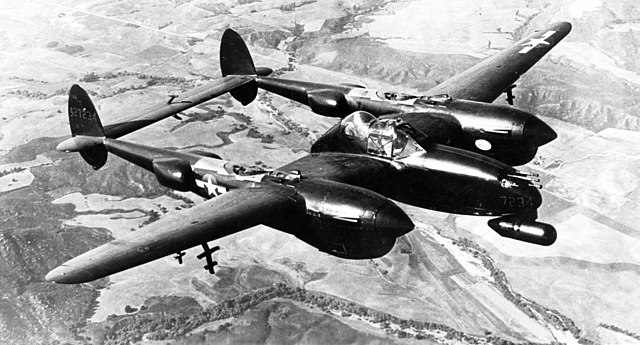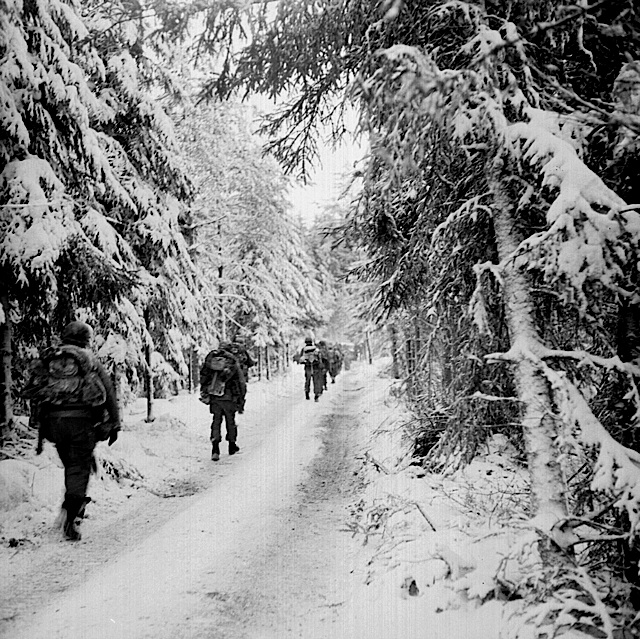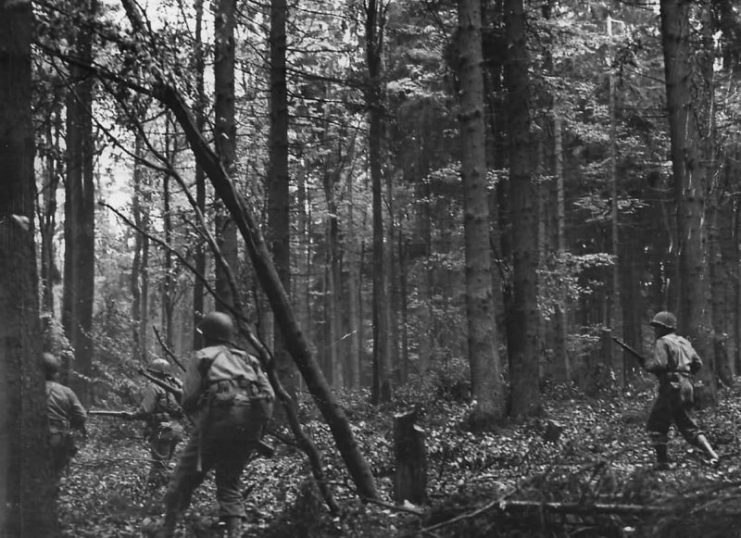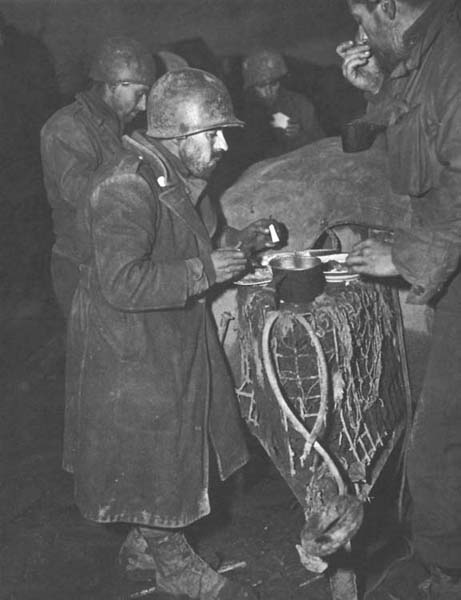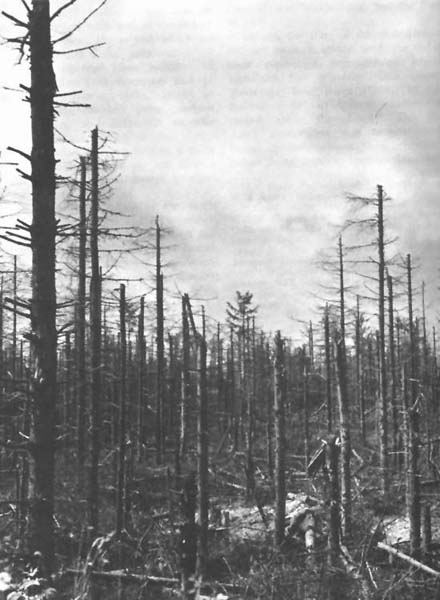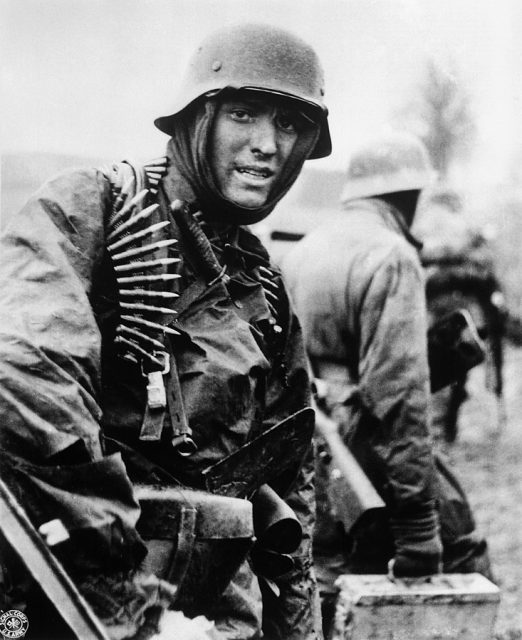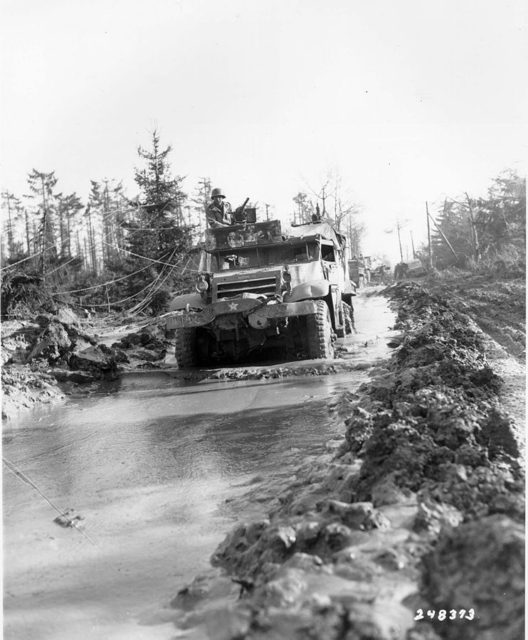The Hürtgen forest and the end of World War II
HISTORY ANNALS
The mostly forgotten Hurtgen forest battles marked the end of WW2 for many GIs.
The fight was so fierce and horrible that many American soldiers returned home deeply traumatised, "changed men," one being J.D. Salinger. For the rest of his life, much of Salinger's legendary bouts of sullenness and ill-temper, and his penchant for reclusiveness, could perhaps be traced to his experiences in WW2, especially when dodging death in the Hurtgen forest.
Unlike many soldiers who had been impatient for the invasion, Salinger was far from naïve about war. In short stories he had already written while in the army, such as “Soft-Boiled Sergeant” and “Last Day of the Last Furlough,” he expressed disgust with the false idealism applied to combat, and attempted to explain that war was a bloody, inglorious affair. But no amount of theoretical insight could have prepared him for what was to come. Salinger would count among his most treasured belongings a small casket containing his five battle stars and the Presidential Unit Citation for valor.
Salinger wrote much that has not survived—there are tantalizing references in his letters—and he also produced much work that never appeared in print. A week after D-day, he sent a three-sentence postcard to (college mentor) Whit Burnett saying that he was O.K., but also explaining that, under the circumstances, he was “too busy to go on with the book right now.” The truth, however, is that Salinger never stopped writing. Of all the Salinger stories to remain unpublished, perhaps none is finer than “The Magic Foxhole,” the first story he wrote while actually fighting on the front line, and the only work in which he ever depicted active combat. “The Magic Foxhole” is angry, verging on the subversive.
The story opens days after D-day on a slow-moving convoy. It casts the reader as an anonymous hitchhiking G.I. picked up by the narrator, a soldier named Garrity. Addressing the G.I. only as “Mac,” Garrity recounts the events of a battle fought by his battalion right after the invasion. His tale focuses on the company point man, Lewis Gardner, and the experiences that cause him to lose his mind. The most powerful portion of “The Magic Foxhole” is the opening scene, which describes the landings at Normandy. Among the dead bodies on the beach is a solitary living figure—a chaplain crawling around in the sand, frantically searching for his glasses. The narrator, as his transport nears the beach, watches the surreal scene in amazement, until the chaplain, too, is killed. It was no accident that Salinger chose a chaplain to be the only living man among the dead in the heat of war. It was also no accident that the chaplain should be desperate for the clarity his glasses would provide. A man who believed he held the answer to life’s great questions suddenly discovers that he doesn’t—just when he needs an answer most. It is a critical moment in Salinger’s writing. For the first time, he asks the question: Where is God?
A Nightmare World
On August 25, 1944, the Germans surrendered Paris. The 12th Regiment was ordered to flush out resistance from one quadrant of the city. As an intelligence officer, Salinger was also designated to identify Nazi collaborators among the French. According to John Keenan, his C.I.C. partner and best friend throughout the war, they had captured such a collaborator when a nearby crowd caught wind of the arrest and descended on them. After wresting the prisoner away from Salinger and Keenan, who were unwilling to shoot into the throng, the crowd beat the man to death. Salinger and Keenan could do nothing but watch.
Salinger was in Paris for only a few days, but they were the happiest days he would experience during the war. His recollection of them is contained in a letter to Whit Burnett. The high point was a meeting with Ernest Hemingway, who was a war correspondent for Collier’s. There was no question in Salinger’s mind where Hemingway would be found. He jumped into his jeep and made for the Ritz. Hemingway greeted Salinger like an old friend. He claimed to be familiar with his writing, and asked if he had any new stories on him. Salinger managed to locate a copy of The Saturday Evening Post containing “Last Day of the Last Furlough,” which had been published that summer. Hemingway read it and was impressed. The two men talked shop over drinks.
Salinger was relieved to find that Hemingway was not at all pretentious or overly macho, as he had feared he might be. Rather, he found him to be gentle and well grounded: overall, a “really good guy.” Salinger tended to separate Hemingway’s professional persona from his personal one. He told one friend that Hemingway was essentially kind by nature but had been posturing for so many years that it now came naturally to him. Salinger disagreed with the underlying philosophy of Hemingway’s work. He said that he hated Hemingway’s “overestimation of sheer physical courage, commonly called ‘guts,’ as a virtue. Probably because I’m short on it myself.”
As time went on, Salinger derived great personal strength from his relationship with Hemingway, and knew him by his nickname, “Papa.” The warmth did not necessarily transfer to Hemingway’s writing—at least not if one goes by Holden Caulfield’s later condemnation of A Farewell to Arms. But during the war, Salinger was grateful for Hemingway’s friendship.

The Allied invasion of Normandy, June 6, 1944. J. D. Salinger was part of the second wave attacking Utah Beach. In reality "hyper-intense moments", such as landing on a beach in a storm of bullets and explosions is not liable to leave a very distinct or reliable recollection. By Robert F. Sargent/Bettmann/Corbis; digital colorization by Lorna Clark.
After the liberation of Paris, General Dwight D. Eisenhower’s chief of staff declared that “militarily, the war is over.” Salinger’s division would have the honor of being the first to enter Germany. Once it had crossed into the Third Reich and breached the Siegfried line, its orders were to sweep away any resistance from the area of the Hürtgen Forest and take up a position to protect the flank of the First Army.
When Salinger entered Hürtgen, he crossed into a nightmare world. The forest was more heavily fortified than anyone had guessed. The Germans employed tree bursts, which exploded well above the soldiers’ heads, resulting in a shower of shrapnel and shredded tree limbs. Then there was the weather—either drenching wet or burning cold. Nearly half of the 2,517 casualties suffered by the 12th Infantry in Hürtgen were due to the elements. Hürtgen is viewed by historians as among the greatest Allied debacles of the war.
Salinger did manage to find one moment of solace. During the battle for the forest, Hemingway was briefly stationed as a correspondent with the 22nd Regiment, just a mile from Salinger’s encampment. One night, during a lull in the fighting, Salinger turned to a fellow soldier, Werner Kleeman, a translator he had befriended while training in England. “Let’s go,” Salinger urged. “Let’s go see Hemingway.” The two men made their way through the forest to Hemingway’s quarters, a small cabin lit by the extraordinary luxury of its own generator. The visit lasted two or three hours. They drank celebratory champagne from aluminum canteen cups.
Salinger’s choice of companion was perhaps an expression of gratitude. Among his commanders in the Hürtgen Forest was an officer whom Kleeman later described as having been “a heavy drinker” and cruel to his troops. The officer had once ordered Salinger to remain in a frozen foxhole overnight, despite knowing that he was without proper supplies. Kleeman secretly delivered two items from Salinger’s belongings that helped him survive: a blanket and a pair of his mother’s ubiquitous woolen socks.
Hürtgen changed everyone who experienced it. Most survivors never spoke of Hürtgen again. The sufferings that Salinger endured are essential to understanding his later work. They gave rise, for instance, to the nightmares suffered by Sergeant X in “For Esmé—with Love and Squalor.”
Editor's recommendation: When watching this video, do not miss the words of US veteran Tony Vaccaro (@ 40:15).
If you are still intrigued (as you should) about this great battle, with all the suffering that it entailed, be sure to click on the ORANGE BUTTON below, "Show More", for materials prepared by the editors of War History Online.
[bg_collapse view="button-orange" color="#4a4949" expand_text="Show More" collapse_text="Show Less" ]
Forgotten Meat Grinder: The Battle of Hurtgen Forest WWII
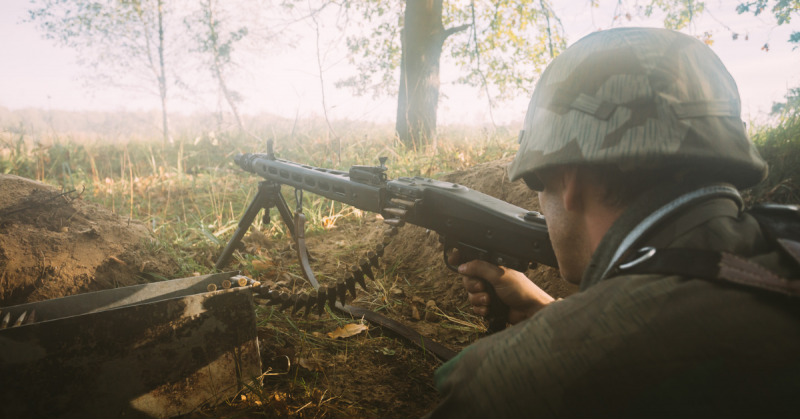
It was some of the most brutal fighting of the Second World War, a grinding battle in which thousands of American and German lives were lost. It was a site of great heroism and futile tragedy, in which the fighting was so deadly that soldiers called it “the Death Factory”. Yet the Battle of Hurtgen Forest is largely forgotten.
Into the Woods
From September 1944 to February 1945, American and German forces fought over the Hurtgen Forest, an area of wooded hills on the border between Belgium and Germany.
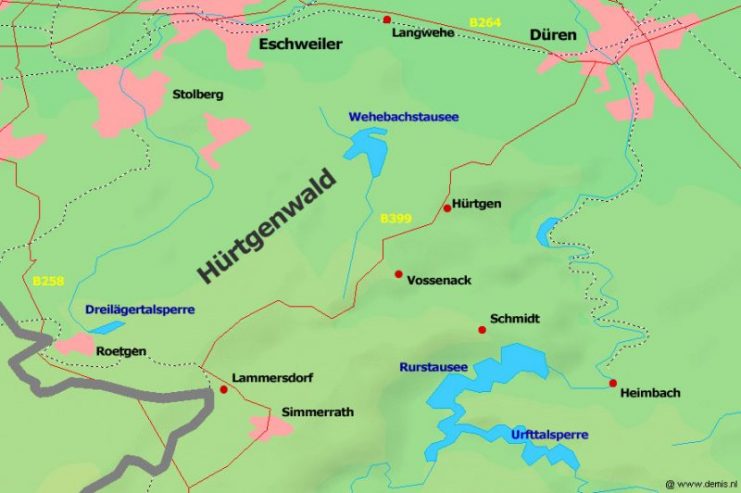
The attack was originally launched to guard the flank of VIII Corps’ advance into Germany. As the fighting progressed, other goals emerged including trying to take control of German industrial dams.
Though outnumbered, the Germans had a string of defensive positions in the form of concrete bunkers, barbed wire, minefields, and tank obstacles, all part of Germany’s defensive Siegfried Line. Despite this, the American commanders were confident that they could break through.
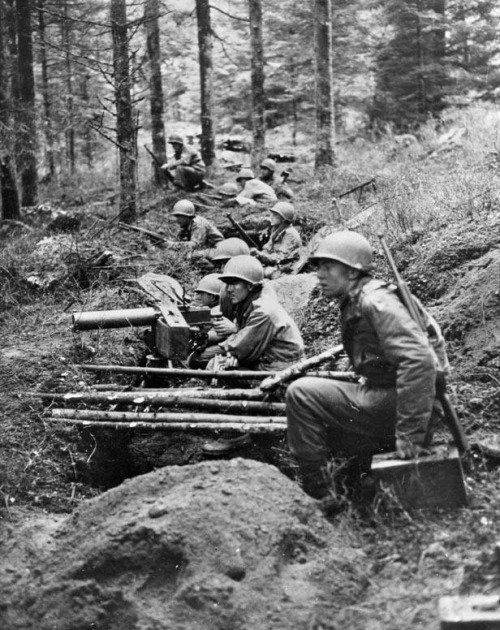
US troops on a trench line in the Hurtgen forest, the border between Belgium and Germany. December 1, 1944
First Attacks
Allied forces were eager to get into Germany. Following a swift sweep through France, they had reached the homeland of the Reich 233 days ahead of schedule.
The attack into the Hurtgen was preceded by air attacks by the USAAF and the RAF. Thunderbolts, Lightnings, and Typhoons pounded the German border defenses.
But tree cover would prevent them from providing the support they could in other terrain, and entering the forest immediately lost the Americans one of their advantages. The mobility and superiority of tanks and aircraft were largely canceled out. Infantry advanced on heavily defended positions with less support than they had had in the preceding months.
The advance into the forest began on the 13th of September, as veterans of the Mediterranean campaign crossed the border from Belgium into Germany. By the next day, they were six miles through the German defenses.
The day after that, the Germans launched the first in a series of counterattacks. By the 17th, the fighting had turned into a slow grind. American infantry tried to advance down narrow trails between tough defenses, only to be stalled by German forces and hit by counter-attacks.
Fighting in the Forest
With German pillboxes spread throughout the forest, the Americans had to advance cautiously when they could advance at all. Combat engineers and infantrymen moved slowly through the defenses, lifting mines, cutting barbed wire, defusing booby traps, and attacking pillboxes with flamethrowers and dynamite. The 15th Engineer Combat Battalion alone lifted 1,352 mines and neutralized 125 pillboxes under fire during the initial wave of intense fighting.
The Germans had a further advantage in experience. Many of them had fought in the forests of Russia and Finland. The Americans had no such experience and did not initially understand the nuance of combat in forests.
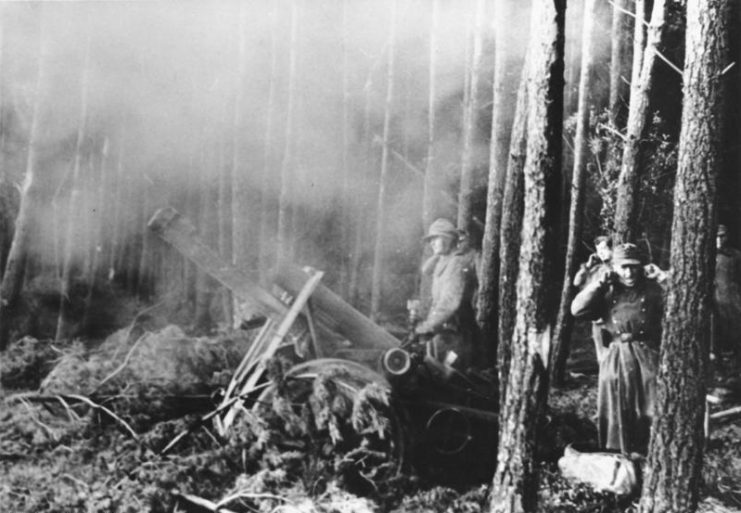
A German heavy mortar firing in defense against a U.S. attack on 22 November 1944 in the Hürtgen forest
At many points, the Americans found themselves unable to break through the German lines. They stopped where they were, digging foxholes for their own defense. These had to be covered with logs and sod because of the tendency of artillery shells to explode in the treetops, showering them with shrapnel.
The generals were determined to have their breakthrough, and kept launching offensives against German positions. Some led to small successes, though they were often swept away in counter-attacks. More often, little progress was made.
During breaks in the fighting, the two sides called truces to retrieve the dead and wounded. But many men were not found, and so lay dead or dying out among the trees.
The Strain of War
As fall drew on, endless drizzle turned the ground to mud. Snow followed with the arrival of winter. It was a miserable season for both sides, but particularly for the Americans. Living in cold, wet foxholes, many succumbed to trench foot, the bane of infantrymen in the previous war. They went for days without hot food, living off their packs of C and K rations.
Regular bursts of terrible combat took their toll on men’s minds. What medics and commanders of the time called “combat fatigue” led to many soldiers having to be taken off the line. Some men shot themselves in the foot to get out of combat.
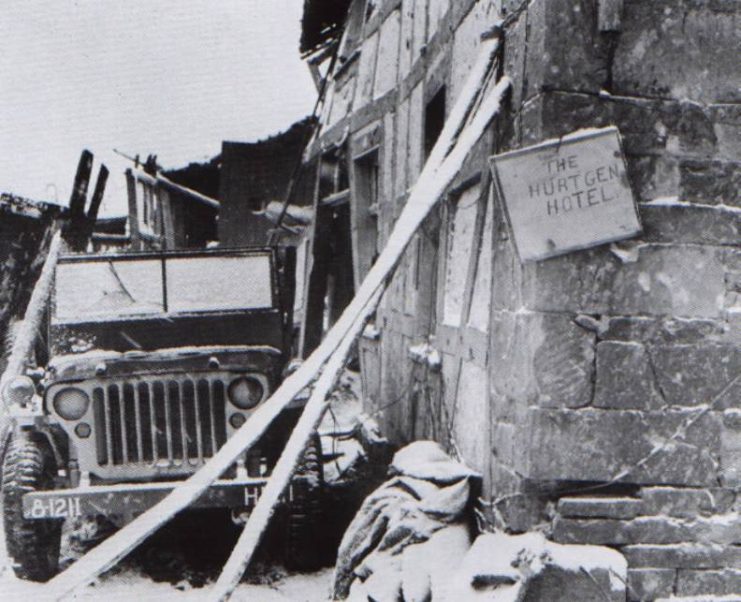
A farmhouse on the main route through Hürtgen served as shelter for HQ Company, 121st Infantry Regiment, 8th Infantry Division, XIX Corps, 9th US Army, as indicated on the bumper of the jeep. They nicknamed it the “Hürtgen Hotel”.
Behind the scenes, generals clung to the delusion that the best thing they could do was to keep launching the same sort of attacks, just as their predecessors had done from 1914 to 1918. Beyond the Hurtgen, the war was moving on, and the Americans could simply have contained and moved around this impossible part of the German lines. But they kept pushing.
As the casualties mounted, inexperienced recruits replaced the veterans who had first entered the forest. Still the fighting ground on.
Towards an End
In December, the Germans launched a vast counter-attack through the neighboring Ardennes region. The focus of the fighting shifted away from the Hurtgen.
In February, the Americans launched their last substantial attack in the Hurtgen. Their target was now the Rur Dam. If the Germans opened its gates, then the Allied advance into Germany would be delayed by flooding.
On the 10th of February, the Americans took the dam, but it was already too late. The Germans had jammed open the floodgates. Advances outside the Hurtgen were delayed by two weeks, costing the Americans, British, and Canadians heavy casualties.
The Americans had finally broken through the forest, but it could not be called a victory. The Germans under Field Marshal Model had held them up for six months. This victory belonged to the Germans.
Counting the Cost
During six months of fighting, the Americans sent eight infantry divisions, two armored divisions, and several smaller units into the forest. Many rifle companies suffered 50% casualties. Two regiments suffered losses equaling 100% of their fighting strength. In total, nearly 30,000 Americans were killed or wounded and thousands more were knocked out of action by combat exhaustion.
Because it wasn’t a success, the American government and press didn’t draw attention to the fighting for the Hurtgen. They swept the story aside and focused on fighting elsewhere.
It was one of the most costly and unproductive American operations of the war. To the men who fought bravely and lost friends there, it would always be the Death Factory.
[/bg_collapse]
BONUS FEATURE
Biography of the life of Reinhard Heydrich—
"THE BUTCHER OF PRAGUE"

